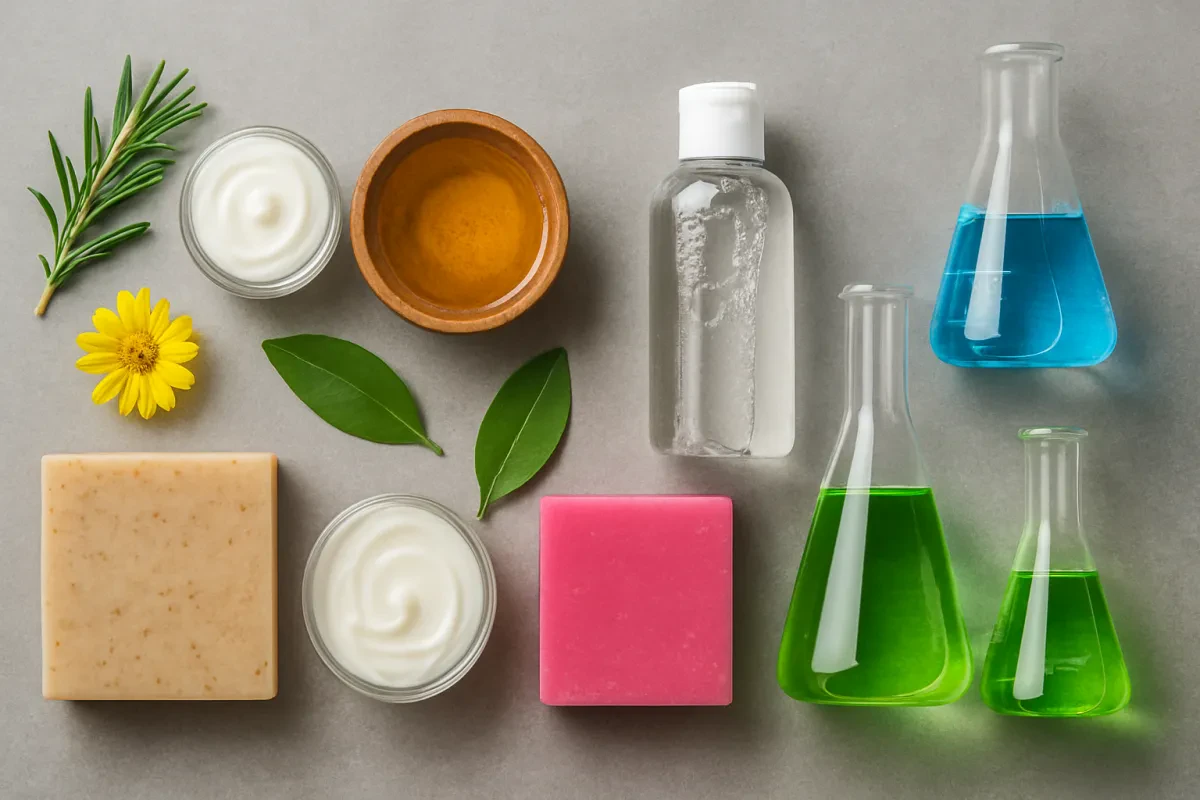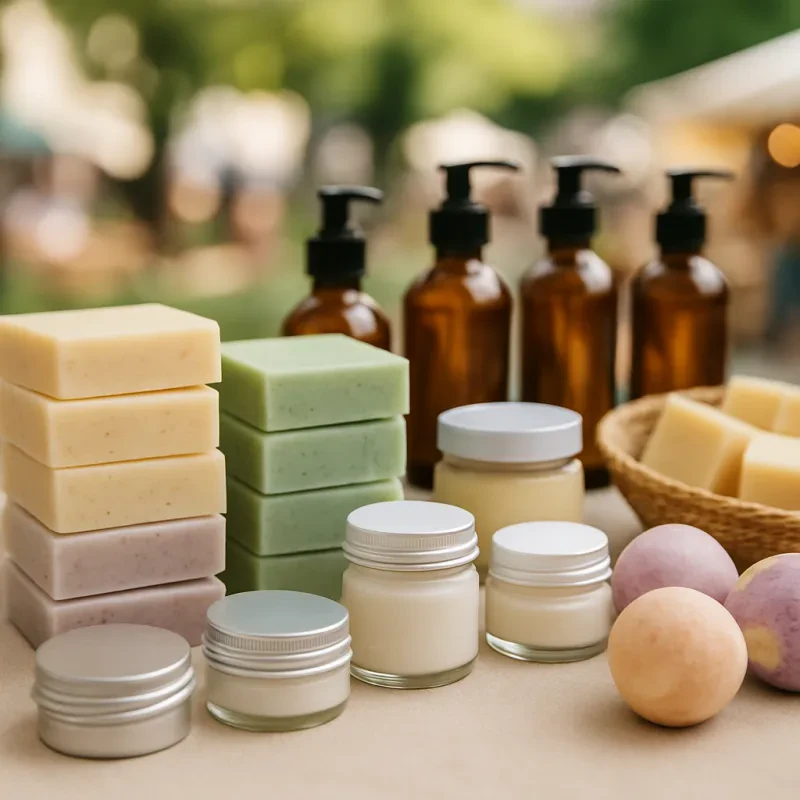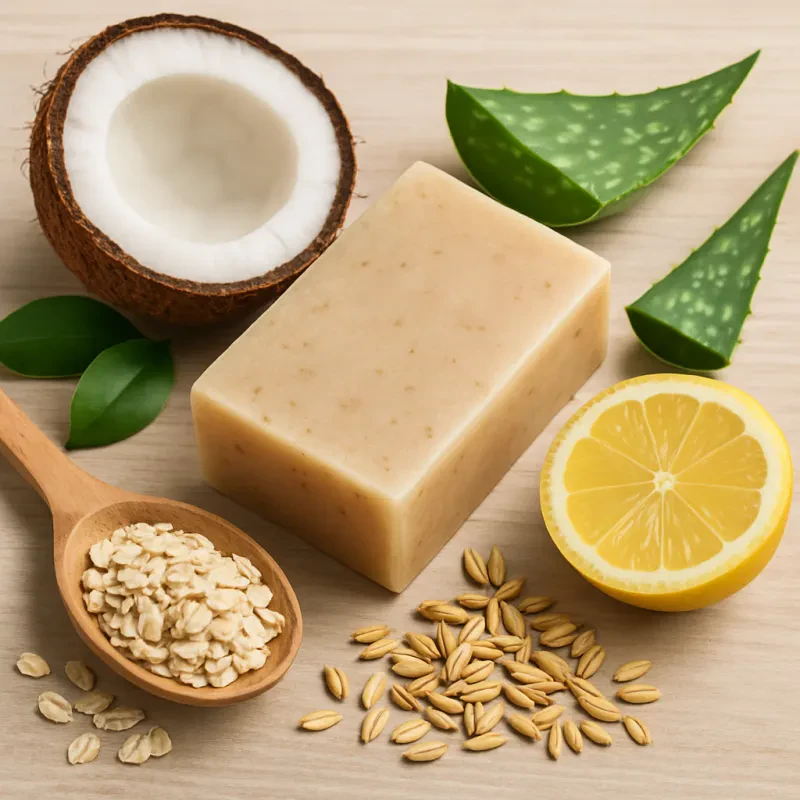The debate between natural and synthetic ingredients has become central to the world of handmade soap and cosmetic formulation. With growing consumer awareness and demand for transparency, formulators are often faced with a difficult question: Should I stick to all-natural ingredients, or is there a place for synthetics in my products?
The answer is not black and white. Both natural and synthetic ingredients have their strengths and limitations. Making informed choices means going beyond marketing buzzwords and considering safety, efficacy, sustainability, and formulation goals. Here’s a closer look at the differences—and how to choose wisely.
What Are Natural and Synthetic Ingredients?
Natural ingredients are derived from plant, mineral, or animal sources with minimal processing. Examples include coconut oil, shea butter, beeswax, clay, essential oils, and herbal extracts. They are often perceived as gentler and more environmentally friendly, especially when sustainably sourced.
Synthetic ingredients are created through chemical processes and may mimic or improve upon natural substances. These include lab-made preservatives, emulsifiers, surfactants, colorants, and fragrances. Some are identical to their natural counterparts at the molecular level (nature-identical), while others are entirely man-made.
Safety: The Truth About “Natural” and “Synthetic”
A common misconception is that “natural” automatically means “safe” and “synthetic” means “harmful.” In reality, the safety of any ingredient depends on its composition, concentration, usage, and the overall formulation.
For example, essential oils like cinnamon or clove can be highly irritating or sensitizing to the skin if not properly diluted. On the other hand, synthetic preservatives such as phenoxyethanol, when used within safe limits, can effectively prevent microbial growth and extend shelf life without harming the skin.
The key is to evaluate ingredients based on scientific evidence, not just origin. Reputable suppliers should provide safety data, usage guidelines, and regulatory status for each ingredient.
Efficacy: What Works Best?
Natural ingredients often appeal to consumers seeking simplicity and wellness—but they don’t always deliver the same performance as synthetics. Natural surfactants, for instance, may produce less lather or have a higher pH, which can affect skin feel and cleansing ability. Natural preservatives tend to be less broad-spectrum and can shorten shelf life, especially in water-based products.
Synthetics, by contrast, are designed for performance and consistency. They may offer superior texture, longer shelf stability, better emulsification, or more vibrant colors. This doesn’t make them inherently better, but it means they can solve formulation problems that natural ingredients struggle with.
A balanced approach often involves using a mix of both—leveraging natural actives and oils for their skin-loving benefits while incorporating synthetics when safety, stability, or functionality demands it.
Sustainability and Environmental Impact
Many formulators choose natural ingredients for environmental reasons. Plant-based oils, biodegradable surfactants, and zero-waste packaging align with values of eco-conscious consumers. However, not all natural ingredients are automatically sustainable. Overharvesting, deforestation, and poor labor practices can be concerns, especially with exotic butters or essential oils.
On the synthetic side, some lab-created ingredients reduce the strain on natural resources. For instance, nature-identical fragrances or vitamins may prevent overuse of rare plants while maintaining desired effects. However, certain synthetic chemicals can be persistent in the environment and may contribute to pollution if not carefully managed.
Sustainability is complex and case-specific. Look for suppliers that are transparent about sourcing, certifications, and environmental impact.
Regulatory and Marketing Considerations
Different countries regulate cosmetics differently, and “natural” is not a legally defined term in many jurisdictions. Products labeled as “natural” may still contain synthetic stabilizers, preservatives, or fragrances.
If you’re selling cosmetics and marketing them as natural, be cautious about the claims you make. Follow guidelines set by organizations like COSMOS, ECOCERT, or the FDA to ensure accurate and compliant labeling. Keep documentation of your ingredient sources and formulation choices.
How to Make Informed Choices
-
Define Your Brand Values
What does “natural” mean to your brand? Is it about using plant-based ingredients, avoiding synthetics entirely, or focusing on sustainability? Clarify your values to guide formulation decisions. -
Evaluate Ingredient Function
Choose ingredients based on what your product needs to do. Does it require emulsification, preservation, foaming, or fragrance? Determine if a natural option can meet those needs effectively—or if a safe, synthetic alternative is more appropriate. -
Use Reliable Suppliers
Source ingredients from reputable vendors who provide transparency, documentation, and safety information. This helps ensure quality and builds consumer trust. -
Test and Reformulate as Needed
Formulations may need adjustment depending on ingredient availability or performance. Always test for stability, skin compatibility, and safety. -
Educate Your Customers
Be honest and clear about what’s in your products and why. Educated consumers appreciate transparency, and trust grows when they understand the purpose behind each ingredient.
Final Thoughts
Choosing between natural and synthetic ingredients isn’t about taking sides—it’s about making informed, responsible choices that align with your values, product goals, and customer expectations. Whether you create minimalist, all-natural soaps or high-performance cosmetics with smart synthetics, the goal should always be the same: safe, effective, and ethical formulations. By understanding the strengths and trade-offs of each ingredient type, you can create products that are not only beautiful but truly beneficial.



